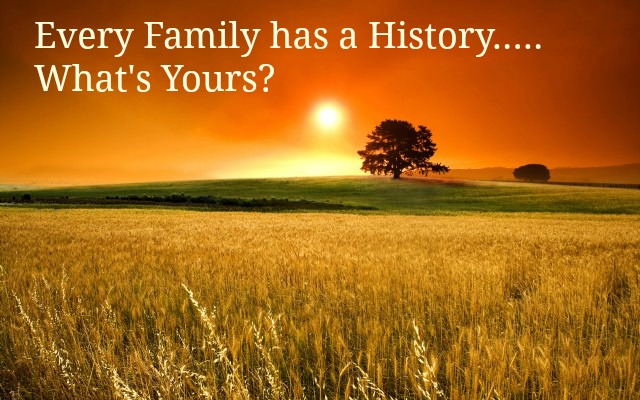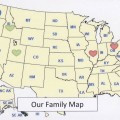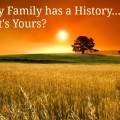Since you have opened this article, I assume you are interested in starting to research your genealogy or looking for additional ideas to help further your research. In the next few weeks I will be addressing the getting started basics of doing genealogy and then going to more advanced topics and techniques.
This week will cover recording keeping and organizing what you find.
Week 2: Begin at home—what do you already have?
Week 3: The do’s and don’ts of conducting successful interviews with family members
Week 4: Searching public records to find more information
Record-keeping and Organizing What You Find
If you are just starting out, it may seem strange to start with a discussion of keeping track of what you find when you haven’t found anything yet! But trust me, I can tell you from my own experience; if you don’t develop a filing system, you will develop a piling system. Piling systems lead to documents being hard to locate, damaged or even lost. Organizing expert’s advice: don’t put it down, put it away. If you start by setting up a filing system, you will be able to put documents away as you acquire them. Also, the basic record-keeping forms for genealogy can act as a road map of the information you want to find. The three basic genealogy documents are pedigree charts, family group sheets and a research log sheet.
Pedigree charts record family information so that the various branches of your family tree are clearly displayed so that the relationship between generations is identified. You would record yourself in slot 1 on the left hand side of the form. Your father would be in slot 2 and your mother in slot 3 and so on. In addition to names, pedigree charts provide space to record birth, marriage and death information. There is no space on the pedigree chart for your siblings, aunts, uncles or cousins. For those additional family members, you will put that information on a family group sheet. For each couple on your pedigree chart, you will need to create a family group sheet.
Link for blank pedigree chart: http://www.byub.org/ancestors/charts/pdf/pedigree.pdf
Link for blank family group sheet: http://www.byub.org/ancestors/charts/pdf/familygroup1.pdf Both of these links allow you to print out the blank form or add what you know before printing it out.
The following short video from Family Search details the use of these two forms. A note of explanation to those who are not members of The Church of Jesus Christ of Latter-day Saints: this video makes brief reference to sacred Temple ordinances that members of the church perform for their ancestors to insure the eternal nature of their families. More information on these sacred ordinances can be found at: http://mormon.org
VIDEO INSERT
The third basic form you will want to use is research log. A research log is useful for both keeping track of what steps you have already taken to find the desired information and to help you stay focused on what information you are seeking. It is very easy to become distracted with a number of questions when you are looking for family information, even if you don’t have ADD! This is what a research log looks like:
 A research log helps keep you focused because as you can see, it is for just one question about one ancestor. For example, where and when was he/she born or when and where was their marriage. It helps you to tackle one question at a time so that your efforts are concentrated rather than being diluted by trying to address multiple questions at the same time. A log will also help you keep track of what records or people you have consulted to find the desired information. This is helpful in least two situations. If your life circumstances are such that there are seasons when you will have time to pursue genealogy and then have to put aside for a while before you pick it up again, a research log will help you know where to resume your research. More consistent use of a research log would have saved me the expense of ordering for a second time a microfilm from the Family History Library that I had found no helpful information on the first time I had ordered it several years before! Also more information which is useful to family history researchers is becoming available now at a hastening pace. For example, https://familysearch.org/ is adding new records every week! All family history researchers, regardless of their level of experience hit brick walls when it seems impossible to find the needed information. With ever-increasing information, what you can’t find now may be available next month or next year. So file that research log with the unanswered question away and revisit the question later. Since you will want one sheet for each question, here’s a link to blank Research log: https://familysearch.org/learn/wiki/en/images/5/50/Research_Log.pdf
A research log helps keep you focused because as you can see, it is for just one question about one ancestor. For example, where and when was he/she born or when and where was their marriage. It helps you to tackle one question at a time so that your efforts are concentrated rather than being diluted by trying to address multiple questions at the same time. A log will also help you keep track of what records or people you have consulted to find the desired information. This is helpful in least two situations. If your life circumstances are such that there are seasons when you will have time to pursue genealogy and then have to put aside for a while before you pick it up again, a research log will help you know where to resume your research. More consistent use of a research log would have saved me the expense of ordering for a second time a microfilm from the Family History Library that I had found no helpful information on the first time I had ordered it several years before! Also more information which is useful to family history researchers is becoming available now at a hastening pace. For example, https://familysearch.org/ is adding new records every week! All family history researchers, regardless of their level of experience hit brick walls when it seems impossible to find the needed information. With ever-increasing information, what you can’t find now may be available next month or next year. So file that research log with the unanswered question away and revisit the question later. Since you will want one sheet for each question, here’s a link to blank Research log: https://familysearch.org/learn/wiki/en/images/5/50/Research_Log.pdf
When I started doing genealogy 40 years ago, I used paper, pencil, snail mail and occasionally made an expensive long-distance phone call. With my husband in graduate school, finances were tight. I set up a simple filing system using a file box from an office supply store and filled with a few file folders and recycled large manila envelopes. I labeled one manila envelope for each of the surnames on my original pedigree chart. My filing system devolved into a piling system when I failed to add envelopes as I found more surnames. In addition, the envelopes required that they be removed from the box and opened in order to insert new items and so it was easier to toss things on top of the box with a promise to put it away later. When the pile on top of the box grew too high, I found a drawer in which to tuck things away, again with the idea of organizing later.
Later is now and this is the system that I have made a New Year’s resolution to set up and maintain. I’m going to start with a plastic file crate that is designed to hold hanging file folders. There will be a hanging file folder for each surname. The advantage to hanging file folders is that they can be subdivided by inserting paper file folder into them. They are also easier to slip things into them. Fortunately, during this time of year office supply stores often run sales on organizing materials in preparation for tax season.
Genealogy today requires much less paper than it has in the past. Several websites including https://familysearch.org/ have the digital images of original documents online. These documents can be downloaded and stored in surname folders on your hard drive instead of a hanging file folder. There are also family history software programs including Roots Magic, Ancestral Quest, Legacy and Family Tree Maker. These programs allow you to create a database of your genealogy right on your computer. Now only does it reduce the amount of paper but it reduces errors because you only need to input a piece of information once. After that you can use the software to create a pedigree chart, family group sheet and other forms with that same information without having to enter it again. Most, if not all, of these programs have free versions. These free versions include the basic tools for creating a record of your family history. If after you have used the free program for a while or you decide to buy the full program upfront, the full version of these programs sell for about 30 dollars. The various programs also have self-help tutorials on their respective websites. Roots Magic even has a YouTube channel of help videos.
I personally use a mixture of paper and digital storage. I probably store more in paper form than I would if I was in my twenties and had grown up in the digital age. I scan photos to share or include in blog posts but I keep the paper copy. Likewise a paper record like my grandfather’s World War I navy service record that I received recently, I plan on scanning it to make it easier to share but I will retain the paper copy too. If I can download a record in digital form, I store it in a folder on my computer. I use Roots Magic to keep my records organized on my computer. My husband has an extensive compiled genealogy because his family members, beginning with his great-grandparents, have collected records. Using a family history software program has made it easy to combine my records with his so that our kids have all the genealogy from both him and me.
Consider what will best work for you from among the suggestions I have made. Next week the subject will be: begin with yourself and at home. You probably already have more information than you realize.
About Christine Bell
Christine Bell has been seeking her ancestor for almost forty years and continues to find joy in each one she finds. She volunteers in a Family Search Family History Center where she helps others find their ancestors. As a convert to The Church of Jesus Christ of Latter-Saints, she is grateful to be a member of the Church. She is a wife, mother of six grown children, grandmother of five going on six, and currently living in the western United States. Christine enjoys spending time with family and creating quilts for family, friends and Humanitarian Services of The Church of Jesus Christ of Latter-day Saints.







